
views
Asking for Bail in Court

Check if you can post bail. In many states, there is a set amount of money that you can post in order to be released. The amount is determined by your state law. For example, many states set a standard amount for a first-time DUI offense. States also set specific amounts for other common offenses. You should be told the amount of bail soon after you are booked. If not, you can call a friend or family member and ask them to go to court and check how much it would cost to release you.

Make a first appearance. In some states, you have a legal right to a “first appearance” before a judge, usually within 24 hours of your arrest. At this first appearance, the judge will decide whether or not bail is appropriate. If appropriate, then the judge will set the amount. At your first appearance, you probably won’t have a lawyer. You may also be confused, scared, and not know what to say. This is perfectly normal. Because you can’t advocate forcefully on your own behalf, the judge might deny you bail. If you are denied bail at your first appearance, then you can request that the judge set bail when you appear for your arraignment. You may also file a motion requesting that the judge set bail. This is described more fully in Method Three.

Attend your arraignment. You can also ask for bail at your arraignment if you didn’t have a first appearance. You could also ask the judge to reconsider the bail amount at your arraignment. Depending on your state, you will be taken before a judge for your arraignment a few days after you were arrested. At the arraignment, the judge will read the criminal charges against you. You will also be asked for how you plead, generally “not guilty,” “guilty,” or “no contest.” If you plead “not guilty,” the court will schedule future hearings.
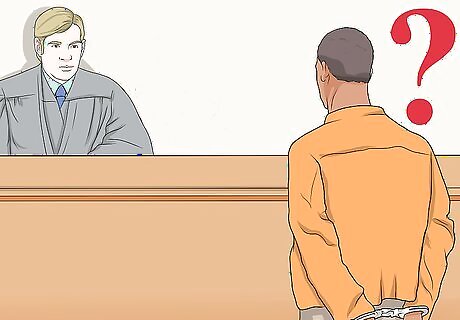
Ask the judge for bail. Depending on the charges and your state, the court may automatically hold the bond hearing at the arraignment. You will be charged with the crime and then the judge will immediately consider whether bail is appropriate. In some situations, however, the judge might not immediately consider bail, so you should ask. The judge will probably ask you if you have any questions. You can raise the issue of bail at that time. For example, you could say, “Yes, Your Honor. I would like to request a hearing to reduce my bail” or “I would like to schedule a hearing to set bail.”
Filing an Administrative Request to Lower Bail
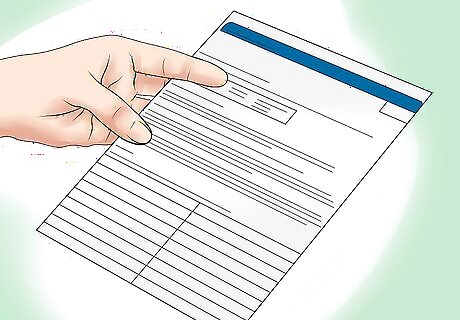
Find a form. Some courts allow you to request a lower bail amount by filing a form to request administrative review. This is not available in all courts. You should check with the court clerk and ask how to request reduced bail. If you are in jail, then ask friends or family members to check. Courts which use an administrative review system often have printed forms you can complete. You should get one.
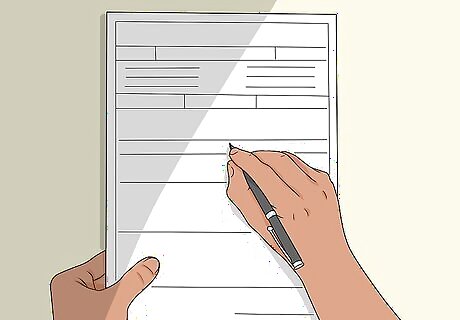
Complete the form. Enter your information neatly, using black ink. Each form will be slightly different. However, they generally request the same kinds of information, which you should gather before sitting down to complete the form: Case number. This should be on any court form that you have received in the case. Bail information. State the amount of bail and any other conditions. Reason for modification. Make sure to state all of the reasons why you think your bail should be reduced. Personal information. You should provide your contact information.

Submit the form. The form should tell you how to submit it and who to address it to. Be sure to send it to the approved address, otherwise your request will not be considered. If you are in jail, then ask the officer in charge how you can mail or fax the form.
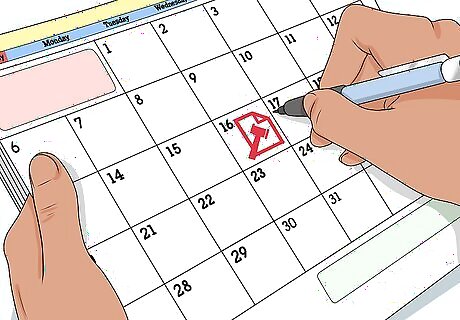
Schedule your bail hearing. The administrative department should review your application promptly. If they find that a modification hearing is appropriate, then they should schedule the hearing with the judge to reconsider bail. You should receive the hearing date in the mail. If you don’t hear anything from the administrative department within a week, then call and double check that they have considered your request.
Filing a Motion in Court

Format your document. You can ask that a judge set bail or reduce bail by filing a motion in court. You should begin by formatting your document. Open a blank word processing document and set the font to Arial or Times New Roman 14 point. Give the document one-inch margins. If you are in jail, you can handwrite a motion. You should check with the supervisor of your jail about getting a blank “motion” form. If you can’t get one, then you can write your motion on sheets of paper.
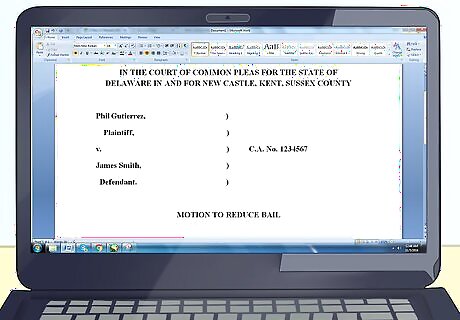
Insert the caption. At the top of the page, insert the caption information. This information stays the same throughout your prosecution, so you can pull this information from any court document filed in your case. The caption contains the following information: The name of the court at the top of the page. The names of the parties. Typically, it is “State v. [your name]” or “People v. [your name].” Put the names of the parties below the name of the court. The case number. Title. You can title your motion “Motion to Reduce Bail” or something similar.
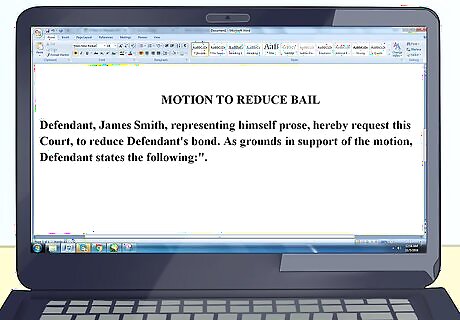
Add an introduction. You should briefly identify yourself and state why you are bringing the motion. You should also identify whether you have a lawyer or are representing yourself. For example, you could write: “Defendant, James Smith, representing himself pro se, hereby requests this Court to reduce Defendant’s bond. As grounds in support of the motion, Defendant states the following:”.
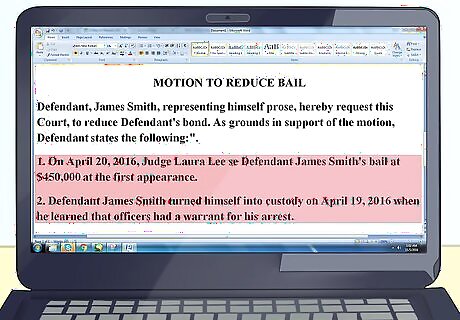
Explain details about your arrest. You might want to begin by explaining some of the background of the case, including when you were arrested. You should also state if you had a first appearance and if any bail was set during the appearance. For example, you might write: “On April 20, 2016, Judge Laura Lee set defendant James Smith’s bail at $450,000 at the first appearance. Defendant James Smith turned himself into custody on April 19, 2016 when he learned that officers had a warrant for his arrest.”
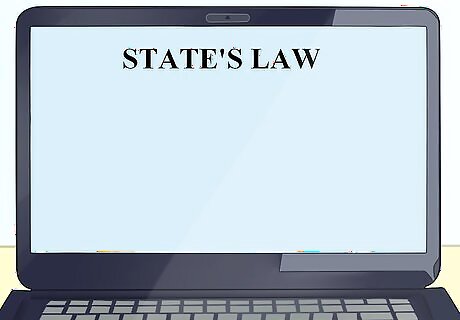
Identify the relevant law. You will need to do some research to find out what facts the court should consider when determining bail. You can usually find your state’s law online. If your jail has a law library, then you can research in the law library. For example, Florida considers the following factors, which you would remind the judge of: nature and circumstances of the charged offense weight of the evidence against you your history, including family ties, length of residence in the community, your employment history, mental condition, and financial resources your past convictions or any prior flight the funds you have available to post bail whether you are on probation, parole, or another form of release pending different criminal proceedings whether you will intimidate or endanger any victims any other facts
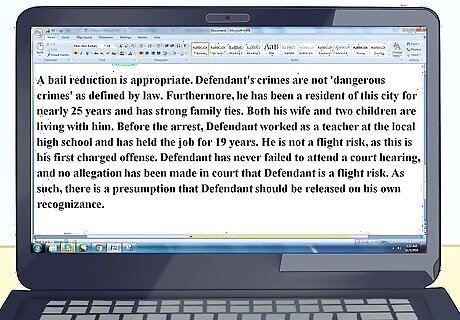
Argue why you are entitled to have bail reduced. You should go down through the factors the judge must consider and explain how any help your argument. Write about yourself in the third person, calling yourself “he” or “she” or “Defendant.” For example, you could write: “A bail reduction is appropriate. Defendant’s crimes are not ‘dangerous crimes’ as defined by law. Furthermore, he has been a resident of this city for nearly 25 years and has strong family ties. Both his wife and two children are living with him. Before arrest, Defendant worked as a teacher at the local high school and has held the job for 19 years. He is not a flight risk, as this is his first charged offense. Defendant has never failed to attend a court hearing, and no allegation has been made in court that Defendant is a flight risk. As such, there is a presumption that Defendant should be released on his own recognizance.”

Conclude your motion. In the conclusion, tell the judge what you want from him or her. For example, you could ask that you be released “on your own recognizance.” Essentially, this means that you won’t have to pay bail but would promise to attend court hearings and the trial. You may also have to occasionally check in with the court. Sample language could read: “Wherefore, Defendant respectfully requests that this Court grant his Motion to Reduce Bail and order Defendant released on his own recognizance.”

Draft a certificate of service. You need to let the prosecutor know that you are filing your motion to set or reduce bail. Accordingly, you will send them a copy. You also need to certify to the court that you sent a copy to the prosecutor. You can write up a certificate of service on a separate sheet of paper. The certificate can read: “I certify that I served a copy of this Motion upon the following party by mailing first class mail, postage prepaid, on April 25, 2016 to [insert name and address of the state prosecutor].”

Get a hearing date from the court clerk. Once you finish your motion, you are prepared to file it. However, you need to get a hearing date as well. If you are in jail, then ask the warden how you can contact the court to schedule the hearing date. Courts schedule hearings differently. In some courts, the clerk will go ahead and schedule the hearing after receiving your motion. This happens automatically. In other courts, you may need to send a brief note with your motion and ask to schedule the hearing. Alternately, you may need to call the court clerk ahead of time.
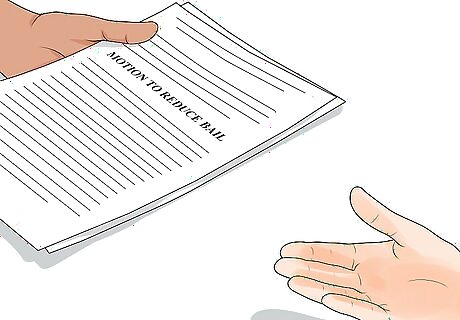
File your motion. If possible, you should make a copy of your motion for your own records. Then you should send the motion to the court clerk. If you are in jail, then you will probably have to mail the motion to the clerk. Ask for the address or look it up online. Be sure to send a copy to the prosecutor.
Letting Your Attorney Handle the Request
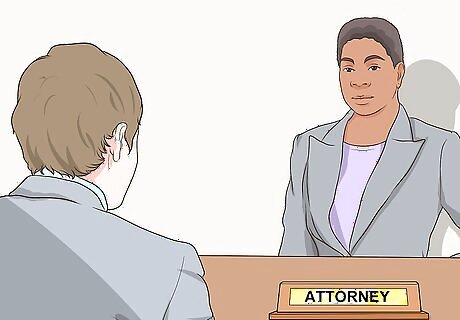
Get an attorney. If you are charged with a crime that could result in imprisonment for six months or longer, then you are entitled to a lawyer. You should ask friends or family to find you a criminal defense lawyer, or you could ask the judge for a public defender. If your family doesn’t know where to find a lawyer, then you can tell them to find the phone number for your state’s bar association. Bar associations are organizations made up of lawyers. Your family member can call and request a referral. You aren’t guaranteed a public defender. Instead, they are generally available if your income is low enough. Before you can get a public defender, you will need to provide the court with information about your finances. Often, there is an application you must fill out.

Ask your attorney for a bail hearing. Your attorney should be familiar with how to request a bail hearing. Your attorney can also draft the motion for you and argue the motion in front of the judge. You should call or write your attorney and ask them to schedule a bond hearing. Explain why you want the bail reduced and why you think it is appropriate. Your lawyer will decide whether to incorporate your ideas into the motion filed with the judge.

Attend your bail hearing. Your attorney will let you know your hearing date. You won’t have to do much to prepare, although you may have to answer the judge’s questions about your home life, job, etc. Remember the following tips: Don’t interrupt the judge. Instead, listen quietly to whatever the judge asks you. Always call the judge, “Your Honor.” Speak only to the judge. If the prosecutor says something you disagree with, don’t turn to the prosecutor and start arguing with them.


















Comments
0 comment